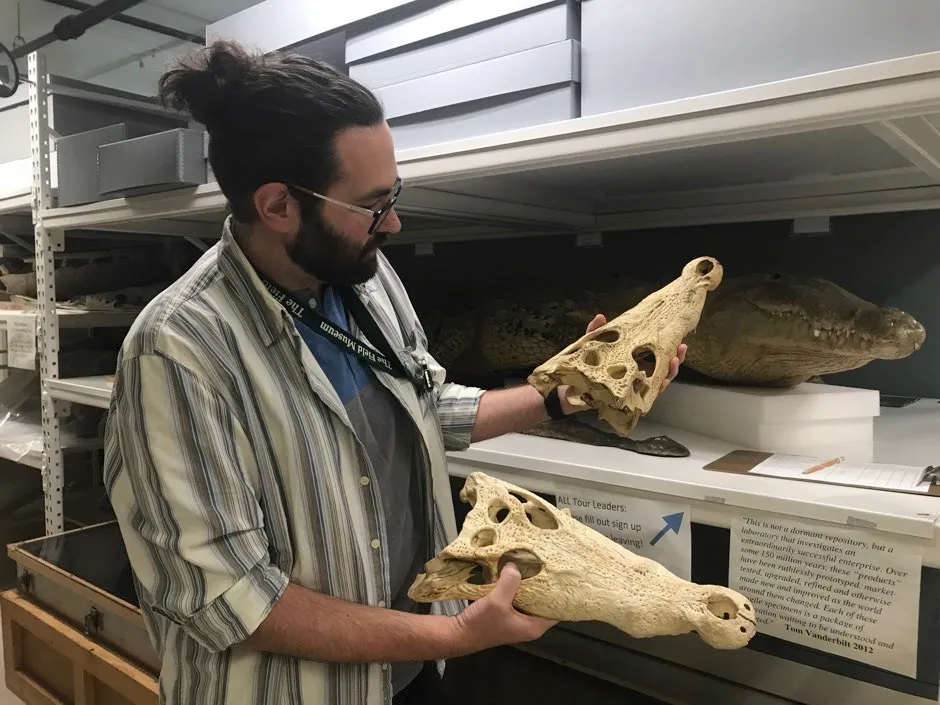A new species of crocodile has been discovered among a collection of skulls in US and Australian museums. The reptile was identified and cross-checked with live specimens at a zoological park in Florida before being described in the journal Copeia.
Called Crocodylus halli to honour Philip Hall, the late scientist who started researching the crocodile’s lineage, the creature hails from New Guinea – a large island north of Australia.
Read more about reptiles:
The scientists who made the discovery say their findings call for new conservation assessments to be put in place.
New Guinea is home to a unique species of crocodile known as New Guinea Crocodile (Crocodylus novaeguineae) which was first identified in 1928.The crocodile exists as two geographically isolated populations separated by a mountain ridge that runs across the centre of the 304,000-square-mile island.

Zoologists have wondered whether the segregated creatures were actually two separate species.Mr Hall, a researcher at University of Florida, had spotted key differences in the way the two crocodile groups nest and mate but passed away before finishing his research.
Chris Murray, an assistant professor at Southeastern Louisiana University, and Caleb McMahan, a scientist at the Field Museum, decided to carry on with Mr Hall’s work, analysing 51 New Guinea Crocodile skulls sourced from different museums across the US and Australia to see if they could find distinguishing features between crocodiles that lived in the northern and southern parts of the island.
What is the minimum difference a species must show in order to be classed as a new species?
Asked by: Adam King, Huddersfield
There are currently at least 26 different ways to define the concept of a species. Some consider physical or genetic similarity, while others consider whether populations interbreed – or whether they could if they weren’t separated by a geographical barrier, such as a mountain range or ocean.
Other definitions of species focus on the evolutionary history of the organism, grouping species according to how recently they shared a common ancestor.
Mr McMahan said: “There are new species out there but a lot of them are sitting in drawers and cabinets in museums, and it just takes time to look at them and figure that out.”
After analysing the skulls for differences in shape and structure, the team visited the St Augustine Alligator Farm Zoological Park in Florida to see if these features were recognisable to the eye.
Mr McMahan told the PA news agency: “The characteristics we look for vary by groups of organisms and the researchers studying them. For my collaborator and I, it was really the combination of evidence – from morphology, biogeography, ecology – that really supported the distinctiveness of this crocodile.

“After analysing all of the data we were pretty convinced of the distinctiveness of this new species. A follow-up ‘eureka’ moment was when we were able to see captive individuals and easily distinguish them as the new species. That was really exciting.”
He added: “We could even look at a skull that they had there and tell what river it came from.”
The New Guinea Crocodile was over-hunted for its skin in the mid 20th Century, but following conservation measures, the International Union for Conservation of Nature (IUCN) – an international organisation that documents the global conservation status of all plant and animal species – now lists it as being of “Least Concern”.

The researchers say that seeing these two populations of the New Guinea Crocodile as separate species calls for new conservation assessments.Mr McMahan told PA: “The IUCN classifications should absolutely be re-examined in light of new evidence. Nearly all crocodilians have protective measures or recommendations in place.
“We are now working with two, instead of one, species of crocodile in the region. For example, if habitats are far worse overall in one area over another, this means something for the now-endemic species occurring on each side of the mountain range.”
At present there are 100,000 crocodiles living on the island.
Follow Science Focus onTwitter,Facebook, Instagramand Flipboard